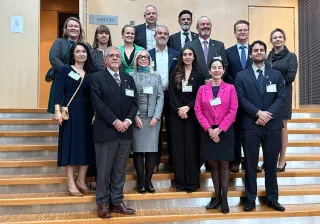Lignocellulose from various plants is a prominent raw material for biofuels. Today, the technologies for utilising the biomass are ready for upscaling.
Cellulose and hemicellulose, the carbohydrate components of lignocellulose, are promising feedstocks for new biofuels. "So far, fuel production from lignocellulose has been a relatively less utilised option for the oil and gas industry. Still, things may change soon," estimates Ilkka Hiltunen, Research Team Leader of thermochemical conversions at VTT.
"From the technological point of view, we have made a lot of development. The technology is ready for upscaling. Now we need to go to the industrial scale and optimise the processes even more. The oil companies have the power and resources to do it."
Pyrolysis, gasification or biotechnology
There are two ways to produce biofuel from lignocellulose. In thermochemical conversion, lignocellulose is decompressed in high temperatures into its components which can then be re-assembled into fuels or chemicals. The main methods used in decompression are pyrolysis and gasification.
The second way is to use enzymes and microbial cells in the conversion of biomass. This leads us to the field of very modern biotechnology. "We can engineer microbial cells to get the products we want, for example, platform chemicals which can then be reformed into fuels and chemicals," tells Merja Penttilä, Research Professor of biotechnology at VTT.
Biomass requires efficient pre-treatment for enabling efficient biotechnical production of various biochemicals. "We have studied many alternatives like alkaline, acid, and organic salt. In principle, we are at a stage where we can go further to large-scale production," Penttilä says.
The complex processes needed to convert biomass into fuels and other chemicals happen in the reactors of the biorefineries. They support biologically active environments where chemical processes can occur. "From the technological perspective, we can go at least to the demonstration-scale biorefineries to further optimise the process," Penttilä says.
New biofuels are essential
There are several non-food sources of lignocellulose available in agriculture and forestry. Enormous quantities of organic wastes, which are lignocellulosic, are generated annually. These wastes represent a valuable resource, especially for areas with agricultural-based economies.
Yet, the availability of raw material basis limits the growth of biofuels because raw material sources have to be 100% sustainable. Small-sized wood and residues from forestry have high potential because they can´t be used as timber in construction. Also, straw and leftovers of rice cultivation could be used.
"When rice is collected, the straw is usually burned. It is a huge environmental problem. A better option would be to collect the straw and produce fuel out of it," Hiltunen says.
In any case, more biofuels are needed in the future. "When we replace oil, we will need all possible alternative feedstocks. New biofuels are essential in all future scenarios because first generation of biofuels and HVO (Hydrotreated Vegetable Oil) can not fulfil the future demand," Hiltunen concludes.
VTT has comprehensive experience in developing technologies for alternative fuels. Order a white paper where we tell more about our offering.
This blog was originally published in 2021 and revised in 2023.




